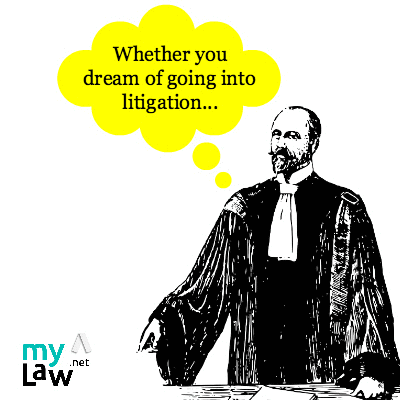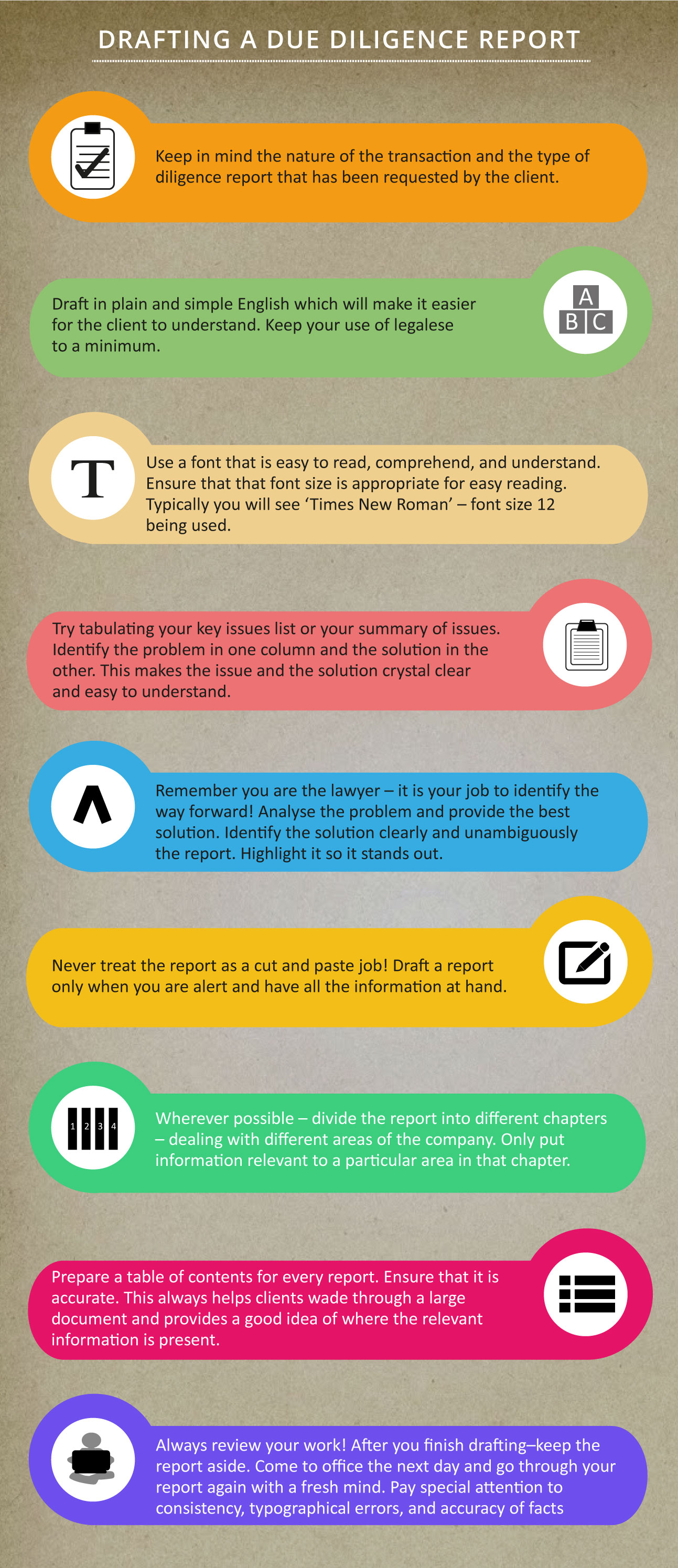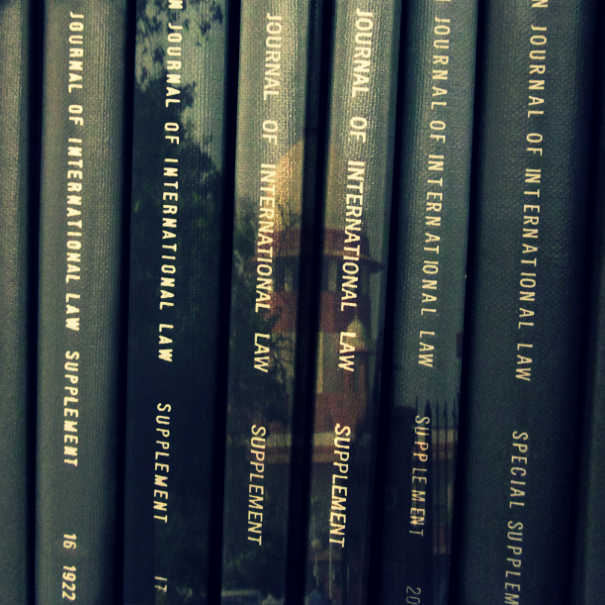At the beginning of a career in litigation, good drafting is one of the few things that junior advocates can do to earn the respect of peers and seniors. Is there a method to drafting well? How does one get better at drafting pleadings? We put these questions to a few experienced Delhi-based lawyers. You can listen to what they had to say, in the video below.
Tag: legal writing
 A shareholders’ agreement is a contract that contains the rights and obligations of the shareholders in a company. It typically supplements either a share purchase agreement or a share subscription agreement. You can read more about them in my post on the documents that you will come across during M&A transactions.
A shareholders’ agreement is a contract that contains the rights and obligations of the shareholders in a company. It typically supplements either a share purchase agreement or a share subscription agreement. You can read more about them in my post on the documents that you will come across during M&A transactions.
Almost every shareholders agreement looks similar. You will see a title, a table of contents, a recital clause, an interpretation clause, and introductory clauses describing the transaction. These clauses have been discussed in detail in myLaw.net’s course on Advanced Commercial Contracts. In this post, I will explain the conditions precedent clause, which is typically seen in all shareholders agreements.
A condition precedent is usually a legal term describing a condition or event that must occur before a contract is considered in effect or any obligations are expected of either party. Here are a few examples.
A is purchasing 100% of the shares in a company whose main business is selling computers to the public. The company does not manufacture computers itself but sells the computers it receives from different distributors. From A’s perspective, the company’s relationship with its distributors is key because if the distributors don’t provide computers to the company, it will have nothing to sell. Many of the distributors’ contracts with the company require their prior approval before a 100% transfer of shares takes place. A would only want his obligation (to purchase shares and pay consideration for them) to be triggered once the company receives these approvals. The receipt of these approvals therefore, is a condition precedent that must be fulfilled by the company before the transaction is effective.
Take another example. B, a non-resident investor who has an investment in an IT company in Mumbai, wants to invest in an IT company in New Delhi. One of the terms of the transaction is that B must sell his interest in the Mumbai-based company before making the investment. So, the sale of those shares in the Mumbai-based company is a condition precedent that B must fulfill before he can invest in the Delhi-based company.
If these conditions are not fulfilled, there will be no deal. Common conditions precedent in M&A transactions include those in relation to obtaining approvals from the regulators, firing or hiring particular employees, ensuring that sufficient cash is available in the company, obtaining approvals from third parties, and ensuring that lease agreements are in place.
On whom is the obligation cast?
Let’s take a closer look at the examples above. You will see that the obligation to fulfill the condition precedent in the examples is cast on different parties. In the first example, the obligation to obtain approvals from distributors is cast on the investee company, that is, the company in which the investment is being made. In the second example, it is cast on the foreign investor. Conditions precedent can thus differ on the basis of the party on which the obligation to fulfill it, is cast. Some obligations can be cast on the investee company, some on the investor, and some jointly on the investee company and its shareholders.
For instance, C is a foreign investor who wants to invest in a company operating in a sector where the approval of the Reserve Bank of India is required for any foreign investment. Typically, the burden of obtaining this approval is cast jointly on all parties because each party’s cooperation is required for obtaining this approval.
While drafting a conditions precedent clause, you must take care to identify the party on whom the obligation to fulfill a particular condition is imposed. This is vital as each party is responsible to fulfill its own obligations in relation to the conditions precedent. While casting an obligation on the investee company, you should examine whether it is also useful to cast the obligation on its shareholders (or at least the majority shareholders) if they control the operations of the company.
The right to waive a condition precedent
Another point vital to this discussion is whether conditions precedent can be waived. Look at the first example. Assume that the investee company has only obtained approvals from fifty percent of its distributors. A, the investor, would really want the deal to go through and should be happy with approvals from these distributors if they are the major ones and would want to waive the condition that approvals must be obtained from all the distributors. Once A has waived the fulfillment of this condition, the deal can go through. The right to waive the fulfillment of a condition precedent is very important in all M&A transactions. Always include this right when you are drafting a condition precedent. The important point to keep in mind is that the person who has the right to waive the condition must be different from the person who is obliged to fulfill the condition.
In the first example, the right to waive the fulfillment of the condition in relation to obtaining consents from distributors must be with A and not the investee company. The investee company can never have the right to waive fulfillment of a condition that it is obliged to fulfill. Similarly, in the second example, the right to waive the condition in relation to withdrawal from the Mumbai-based IT company is on the investee company and not B, the investor.
Since these are all contractual rights, it is up to the parties to decide whether they would like to waive the conditions in part or in full. As a lawyer, your duty is to ask these questions from your client before you start drafting so that you can use the words that are appropriate to your client’s interests.
When should the conditions precedent be met?
Finally, always insert a date by which all the conditions precedent must be met. This is typically called the ‘long stop date’ and is important to ensure that there is no undue delay in the performance of the contract or the fulfillment of the conditions. Parties know that they must fulfill the conditions precedent by a specific date. While drafting this clause however, always include the following or similar words:
“The Conditions Precedent must be satisfied by April 20, 2015 or any date as may be mutually agreed between the Parties.”
The words in plain text above give the parties to a contract the right to mutually agree and extend the time for the fulfillment of the conditions. If, for example, regulatory approval — a condition precedent for a particular deal — takes longer than anticipated, the parties should have the right to extend the long stop date if they feel the need to do so. This is also important because if conditions precedent are not satisfied, the transaction is terminated, and parties must have the flexibility to prevent this.
As you start drafting conditions precedent, you will realise that there are many nuances to the manner in which you draft these conditions. For instance, you may use the words ‘use all reasonable efforts’ to dilute the obligation on a party. In such cases, that party only has to show that it has used all reasonable efforts to fulfill the condition and that will be enough (even if the condition has not been fulfilled).
Keep drafting and with practice, you will get better at drafting conditions precedent clauses.
(Deepa Mookerjee is part of the faculty on myLaw.net.)
 How is Indian legal scholarship used by Indian courts? We have already touched upon the use of peer review in Indian journals. Now, let us look at the judiciary and legal scholarship. The jurisprudence of courts of law in India is littered with references to scholarship from India as well as from abroad. Here are some of the reasons the judiciary has used law journals.
How is Indian legal scholarship used by Indian courts? We have already touched upon the use of peer review in Indian journals. Now, let us look at the judiciary and legal scholarship. The jurisprudence of courts of law in India is littered with references to scholarship from India as well as from abroad. Here are some of the reasons the judiciary has used law journals.
To establish a nascent position of law
First, law reviews are used to establish a new position of law that is still nascent. A good example of the use of foreign scholarship is R. Rajagopal v. State of Tamil Nadu. This case famously referred to the article, “The Right to Privacy” by Louis Brandeis and Samuel Warren in order to establish the recognition and establishment of the right to privacy as a distinct entitlement to be provided to citizens by the state. In Official Liquidator v. United Commercial Bank, the Kerala High Court had to determine the priority of the rights of workers against those of secured creditors in the course of the winding up of a company. The court referred to academic writing in the Journal of the Indian Law Institute to buttress its characterisation of the right of workmen in this context as a social welfare effort of the state.
For clarity in the position of law
Second, the judiciary may use articles to arrive at an unambiguous position of law where clarity is lacking. In Gramaphone India v. Birendra Bahadur Pandey, the question before the Supreme Court was about the definition of the term “import” under Section 53 of the Copyright Act, 1957, in reference to whether certain materials that were illegal in India could be brought through India into Nepal. Here, the Court referred to an article by Johan H.E. Fried (Nepal’s representative at several relevant UN Conferences) in the Indian Journal of International Law on the interpretation of the 1965 Convention on Transit Trade of Land-Locked States.
To identify problems with the current position of law
Third, academic articles are used to understand different aspects of problems associated with the existing position of law that the judiciary ,ust account for. For instance, in 2009, in the seminal death penalty decision of Bacchan Singh v. State of Punjab, two judges of the Supreme Court referred to an article by A.R. Blackshield in the Journal of the Indian Law Institute to note the problem of subjectivity in death penalty decision-making contributing to arbitrariness. On a similar note, the Court referred to a piece by Arvind Datar in the National Law School of India Review to point out some errors in the manner in which Indian courts have been treating the idea of res extra commercium.
To justify the use of an established position
Finally, extracts from scholarships are frequently used to justify a judicial approach predicated on an established position of law. In Ediga Anamma v. State of Andhra Pradesh, Justice Krishna Iyer, referring to a piece in the Yale Law Journal, lyrically stated that “(a)s a judge, I am bound to the law as I find it to be and not as I fervently wish it to be”. Accordingly, he held that despite personal predilections, individual judges are bound by the fact that the death sentence was constitutional.
While it is apparent that the Indian judiciary finds legal scholarship useful, there is less clarity on other, more nuanced questions.
Is this utility sustained and has it changed over time? Scholarship in the United States has closely scrutinised how different courts have used journal articles. For instance, in 2012, Brent Evan Newton of the Georgetown University Law Center conducted an extensive study of the characteristics of articles that were most frequently cited by judges. The general prognosis is overwhelmingly weak and describes a decline in the utility of scholarship for courts. In fact, several prominent members of the American judiciary have displayed open scepticism regarding the value of American legal scholarship. Chief Justice Roberts of the Supreme Court of the United States famously stated that “law review articles are not particularly helpful for practitioners or judges”, a thought echoed at various points by other judges of the Court including Justice Breyer (“there is evidence that law review articles have left terra firma to soar into outer space”) and Justice Scalia.
Another area that is ambiguous in India is whether there is a balanced reference to indigenous scholarship and articles from abroad. Prima facie, it appears that courts rely more heavily on international scholarship. If this is the case, why is it so, and what does it portend about the state of Indian scholarship?
Ashwita Ambast is a graduate of the National Law School of India University and the Yale Law School and has worked with the National Law School of India Review, the Yale Journal of International Law and the Yale Human Rights and Development Law Journal.
 It is remarkable that the guardians of the most powerful academic gateways in legal scholarship in the United States are law students. Several of the most influential American journals such as the Harvard Law Review and the Yale Law Journal are produced by top universities and are entirely student-run (and proudly so) and feature no element of peer-review that is, some form of evaluation by someone knowledgeable in the field. The absence of peer reviewing appears to be unique to legal academia, and unsurprisingly, this fact has drawn considerable flak.
It is remarkable that the guardians of the most powerful academic gateways in legal scholarship in the United States are law students. Several of the most influential American journals such as the Harvard Law Review and the Yale Law Journal are produced by top universities and are entirely student-run (and proudly so) and feature no element of peer-review that is, some form of evaluation by someone knowledgeable in the field. The absence of peer reviewing appears to be unique to legal academia, and unsurprisingly, this fact has drawn considerable flak.
The most classic critique of American journals was penned by Professor Fred Rodell as early as 1936. In his article “Goodbye to Law Reviews”, he strongly questions the academic contribution made by the ‘Harvard Law Review-style’ article as well as the poor, fluffy quality of writing he claims it encourages. Other critics point out inter alia that student editors are unable to fully evaluate technical analyses, particularly the kind found in articles that lie at the intersection of law and other disciplines. Student editors are frequently accused of being distracted by (arguably irrelevant) details such as the position and reputation of the author, conformity with a popular style of writing, and the volume of footnotes. It is true that peer review is not free of its flaws. The objectivity and independence of peer reviewers are frequently called into question as well. But the outrage and criticism against student-run journals is far more pronounced and on the face of it, valid.
What about the reviews being produced by Indian law universities? On surveying the information available about a series of law reviews published by Indian universities, some relevant observations can be made.

First, like the U.S., the kind of journals Indian law universities publish are generally of two kinds. The first is the flagship journal with diverse content, such as the Amity Law Review, the NUJS Law Review, and the NLUD Student Law Review. Also, in addition to the flagship reviews, Indian law universities are witnessing the proliferation of more streamlined journals that publish articles in more niche areas. There exist journals on subjects as specific as corporate crimes, telecommunications and broadcasting law, and law and technology. It appears that both these types of journals, flagship journals as well as niche ones, are a mix of peer-reviewed and student-run.
Second, there are a handful of journals that either state that they have an ‘advisory board’ or that they are jointly run by students and professors. What role do the advisors and professors play in the running of the journals, specifically in selecting the articles and controlling their quality? Does the final say lie with the student editors? On these fronts, many contemporary Indian journals beg clarity.
Finally, there are a handful of journals that indicate in clear terms that they are peer reviewed. However, the universe of peer reviewing is complex; the term ‘peer-reviewed’ itself begs further detail. Despite liberally using serious qualifying terms such as ‘rigorous’ and ‘international’, most journals seem to be unclear about what exactly their review process is.
The overarching conclusion from the three observations outlined above is that Indian law school scholarship has not completely dodged the attendant disadvantages of student run reviews entirely. Much writing is published sans peer review. In cases where peer review is employed, the process is varied and in most cases begs detail and transparency. While this observation may appear banal, it seems fair to expect that journals be more upfront with their potential contributors about the future of their articles. Who is reading them? Who decides their fate? Where are the red lines coming from?
 These observations are preliminary and can potentially be fixed. But there is a larger, more ambitious and more pressing inquiry to be made. The flaws of the existing model of legal scholarship in America (of which the student-run or peer-review debate is just a part) are making journals less relevant to the Bar and even to academia. Apparently, about 43% of law reviews have never been cited in another article or judicial decision. Are Indian law reviews, both peer reviewed and student-run, facing similar challenges of redundancy? How useful are Indian law reviews to the judiciary when decisions are being delivered? What role do university published law reviews play in the work of the Bar? Does the academy believe that these publications are fecund ground for debate? These are some of the questions that this article series seeks to answer in its next editions.
These observations are preliminary and can potentially be fixed. But there is a larger, more ambitious and more pressing inquiry to be made. The flaws of the existing model of legal scholarship in America (of which the student-run or peer-review debate is just a part) are making journals less relevant to the Bar and even to academia. Apparently, about 43% of law reviews have never been cited in another article or judicial decision. Are Indian law reviews, both peer reviewed and student-run, facing similar challenges of redundancy? How useful are Indian law reviews to the judiciary when decisions are being delivered? What role do university published law reviews play in the work of the Bar? Does the academy believe that these publications are fecund ground for debate? These are some of the questions that this article series seeks to answer in its next editions.
Ashwita Ambast is a graduate of the National Law School of India University and the Yale Law School and has worked with the National Law School of India Review, the Yale Journal of International Law and the Yale Human Rights and Development Law Journal.
 In my last post here, I listed out some points that are important for a due diligence exercise. Completing the investigation (or the due diligence) however is just half the job. The latter half – often more confusing – is to organise all the information you have collected in a structured manner and communicate it effectively to your client.
In my last post here, I listed out some points that are important for a due diligence exercise. Completing the investigation (or the due diligence) however is just half the job. The latter half – often more confusing – is to organise all the information you have collected in a structured manner and communicate it effectively to your client.
Before starting to draft, determine the type of due diligence report your client wants. Typically, though there is no formal classification, there are two types of due diligence reports.
A comprehensive due diligence report
You will come across this type more frequently. Many pages long, often going into hundreds of pages, it will contain all the information that you have found from your investigations about the company. It is usually divided into many chapters, each containing information about a specific part of the company.
Generally the chapters include:
– Corporate information: This chapter contains details about all corporate matters related to the target company, including its date of incorporation, number of directors, provisions in the articles of association, corporate compliances, and key decisions of the board and the shareholders.
– Litigation: This chapter lays out the details of all the litigation pending against, and filed by, the target company and their impact on the transaction, if such litigation is decided against the target company.
– Material agreements: Here, all the material agreements that a company has with its suppliers, consumers, and retailers, are reviewed to understand the important terms of such agreements, and determine whether there are any particular clauses that will hinder the transaction.
– Human resources: Here, a broad overview is provided of the employee structure, the key employees, their terms of employment, and conditions of their contracts.
– Financial information or indebtedness: In this chapter, all information about loans or financial indebtedness of the company is reviewed, and key issues such as requirement of consents from lenders, and restrictions on transfer of shares or assets, are highlighted.
– Compliances: In this chapter, there is a detailed investigation into the registration and licenses required under law to carry on the business of the company. Information regarding all statutory compliances is found in this chapter.
– Property: Information about all property (movable and immovable), whether owned or leased by the company, and their terms and conditions, is reviewed and outlined in this chapter.
– Intellectual property law issues: This is important if the target company has registered trademarks, copyrights, or patents. All documents in relation to their registration, ownership, or assignment are analysed, to examine any restrictions present on such intellectual property rights.
– Environmental law issues: If the target company is a manufacturing, construction, or engineering company, acquirers ensure that the company is in compliance with all environmental statutes in India and does not violate any pollution standards that have been prescribed.
– Insurance law issues: This chapter outlines the insurance policies taken by the target company, to provide the acquirer with a general idea of the protection available to the target company.
Since such a report runs into many pages, a client often asks for a separate document listing key issues to accompany this report. The list of key issues is a three-or-four-page document (maybe more depending on the transaction) which only lists out the problem areas of the company and provides concrete suggestions on how to solve these problems. Remember that the client will always want a solution to the problems. It is not enough to only identify the problems in the company. As a lawyer it is your duty to provide a solution. Therefore, while drafting, take some time out to think clearly about the manner in which a particular problem can be solved, and then specify that.
An “exceptions only” due diligence report
Here, a lawyer is only supposed to list out the problem areas or issues with the company. The due diligence report will have language to the effect that “everything is in order with the company except the following…”. This is a report where the client assumes that all the items are in order except those listed in the report. The only problems with the company or its operations are those identified in the report. In other words, while drafting, you will only list out the problems with the company that you have investigated. You will not spend your time stating facts about the company that are in order.
In a comprehensive due diligence report, you will provide the client with all the facts (whether they are in order or not). You will obviously identify problem areas specifically but provide a complete picture as well. In an “exceptions only” report, the client will assume everything is in order except those issues that you have mentioned. Reports like this are becoming common and clients often ask for such reports as they are more concise and much easier to plough through.
Obviously the manner in which you will draft will depend upon the type of report that your client asking for. However, there are some basic drafting points to keep in mind for any report. See the image below.
 Keep these points in mind while drafting your report. While some of these seem very simple and obvious, browsing through it before starting to draft will always help refresh your memory and hold you in good stead in your career as a commercial lawyer.
Keep these points in mind while drafting your report. While some of these seem very simple and obvious, browsing through it before starting to draft will always help refresh your memory and hold you in good stead in your career as a commercial lawyer.
(Deepa Mookerjee is part of the faculty on myLaw.net.)


